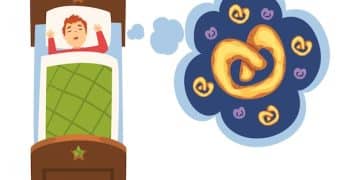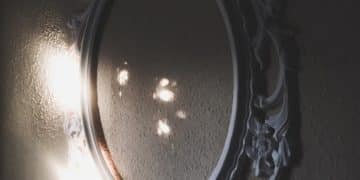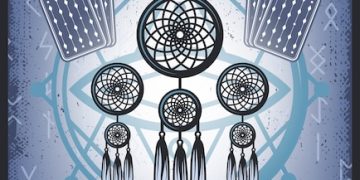Unlock Your Inner Wisdom: Tarot for Self-Discovery
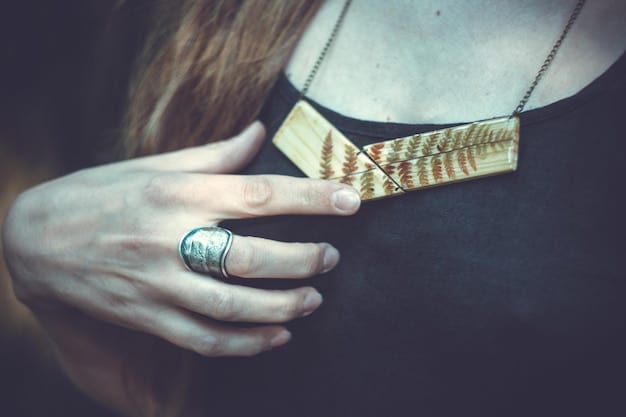
Tarot for self-discovery involves utilizing tarot cards as a tool to gain deeper insights into oneself, fostering clarity and promoting personal growth through symbolic interpretation and introspection.
Embark on a transformative journey of self-exploration with the ancient art of tarot. Tarot for self-discovery can unlock hidden aspects of your personality, provide clarity on life’s challenges, and illuminate your path to personal fulfillment.
Understanding Tarot for Self-Discovery
Tarot is more than just a fortune-telling tool; it’s a powerful mirror reflecting your inner landscape. By understanding the symbolism and archetypes within the cards, you can gain valuable insights into your thoughts, emotions, and behaviors.
This section delves into the core principles of using tarot as a guide for self-discovery, providing a foundation for interpreting the cards in a meaningful way.
The History of Tarot and Its Esoteric Roots
Explore the historical roots of tarot, tracing its origins from medieval Europe to its integration into esoteric traditions. Understanding the historical context can deepen your appreciation for the cards’ symbolic richness.
The Structure of a Tarot Deck
A standard tarot deck consists of 78 cards divided into the Major Arcana and the Minor Arcana. Familiarizing yourself with these divisions is essential for interpreting the cards effectively.
- The Major Arcana represents life’s significant archetypes and lessons.
- The Minor Arcana reflects everyday events and experiences.
- Each suit in the Minor Arcana (Wands, Cups, Swords, Pentacles) corresponds to a different aspect of life: action, emotions, thoughts, and material matters.
By grasping the structure and symbolism within the cards, you can begin to decipher the messages they hold for your personal journey.
In conclusion, understanding the history and structure of the tarot deck provides a necessary framework for using it as a tool for self-discovery. This foundation will allow you to delve deeper into interpreting the cards and applying their messages to your own life.
Choosing Your Tarot Deck
Selecting the right tarot deck is a personal and intuitive process. The deck you choose should resonate with your aesthetic preferences and personal symbolism, creating a deeper connection to the cards.
Many options are available, so take the time to find one that speaks to you.
Exploring Different Tarot Deck Styles
From the traditional Rider-Waite-Smith deck to themed decks based on mythology, fantasy, or nature, the options are vast. Consider what imagery aligns with your personal interests and spiritual beliefs.
Establishing a Connection with Your Deck
Once you’ve chosen a deck, spend time familiarizing yourself with each card. Shuffle the cards, study the imagery, and record your personal impressions in a journal.
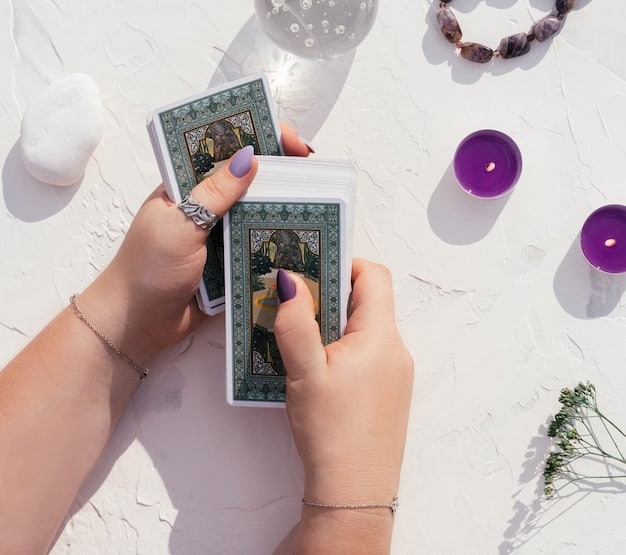
Connecting with your deck creates a sense of intimacy and trust, enhancing your ability to interpret the cards accurately. Consider cleansing your deck through methods like smudging with sage or placing it under the moonlight to purify its energy.
Ultimately, choosing a tarot deck is about finding one that resonates with your soul. Trust your intuition and select a deck that feels like a natural extension of your own inner wisdom. Once you’ve established a connection, you’ll be well-equipped to embark on a journey of self-discovery through the cards.
Simple Tarot Spreads for Self-Reflection
Tarot spreads provide a structured framework for asking specific questions and exploring different facets of your life. Starting with simple spreads is an excellent way to learn the basics of tarot reading.
This section introduces three beginner-friendly spreads that can provide valuable insights.
The Single-Card Draw
The single-card draw is the simplest spread, offering a quick and focused answer to a specific question. Focus on your question, shuffle the deck, and draw one card.
The Three-Card Spread
The three-card spread is a versatile layout that can address various aspects of your life. Common variations include “Past, Present, Future” or “Situation, Action, Outcome.”
- The first card represents the past influences that have led to your current situation.
- The second card reveals your present state and challenges.
- The third card offers guidance towards a potential future outcome based on your current path.
The Celtic Cross Spread (Simplified)
While the full Celtic Cross spread is more complex, a simplified version using only six cards can provide deeper insights into a situation.
These simple spreads are a great starting point for exploring the symbolism and messages of the tarot. As you gain confidence, you can experiment with more complex layouts and incorporate your own interpretations.
Interpreting the Cards: Symbolism and Intuition
Interpreting tarot cards involves a combination of understanding traditional symbolism and trusting your intuition. While learning the meanings associated with each card is essential, allowing your intuition to guide your understanding can unlock deeper levels of personal insight.
This section will explore how interpretation of cards can be accomplished.
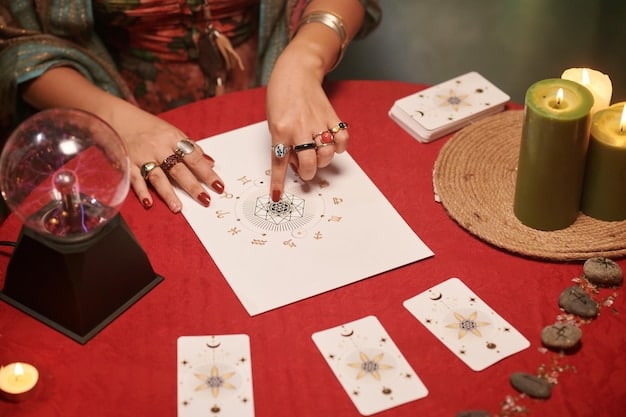
Understanding Key Symbols and Archetypes
Each card in the tarot is rich with symbolism, drawing from mythology, astrology, and esoteric traditions. Familiarize yourself with the key symbols and archetypes associated with each card to provide a foundation for your readings.
Trusting Your Intuition: Connecting with the Cards
While traditional meanings provide a starting point, trust your intuition to guide your understanding. Allow the imagery and emotions evoked by the cards to inform your interpretation.
Listen to your inner voice and pay attention to any sensations or thoughts that arise as you gaze at the cards. This intuitive connection can unlock deeper layers of meaning that resonate with your personal experiences.
- Pay attention to the colors, shapes, and symbols that stand out to you.
- Consider the card’s placement within the spread and its relationship to other cards.
- Journal your initial impressions and revisit them later to gain further clarity.
Combining your knowledge of traditional symbolism with your intuition empowers you to develop a unique and personalized tarot reading style. This approach allows the cards to become a true reflection of your inner wisdom and guidance.
By integrating symbolism and intuition, you open yourself up to a more profound understanding of the cards and their messages for your life. This holistic approach allows the tarot to become a powerful tool for self-discovery and personal growth.
Using Tarot to Identify Limiting Beliefs
Tarot for self-discovery is a pathway to unveiling the beliefs that constrain your full potential. The cards can highlight patterns of thought and behavior that no longer serve you, empowering you to challenge and transform these limitations.
By identifying these beliefs, you can begin to shift your perspective and create a more positive and empowering reality.
Asking the Right Questions
To uncover limiting beliefs, formulate insightful questions that probe your subconscious mind. Instead of asking “What will happen?”, try asking “What beliefs are holding me back from achieving my goals?”
Identifying Patterns and Recurring Themes
Pay attention to patterns and recurring themes that emerge in your readings. Certain cards or suits may repeatedly appear, indicating areas where you may be stuck or facing challenges.
For example, frequent appearances of the Swords suit may suggest that you are struggling with mental blocks or negative thought patterns. Similarly, repeated appearances of reversed cards can indicate resistance or suppressed emotions.
By acknowledging these patterns, you can begin to examine the underlying beliefs that are contributing to them.
Through the use of tarot, you can identify the specific beliefs that are holding you back from living your best life. This awareness empowers you to take conscious steps towards rewriting your narrative and creating a more fulfilling future.
Integrating Tarot Insights into Daily Life
The insights gained from tarot readings are most valuable when integrated into your daily life. Use the wisdom you uncover to make conscious choices, set intentions, and cultivate positive change.
This section explores practical strategies for applying tarot’s guidance to everyday experiences.
Journaling and Reflection
Record your tarot readings in a journal, noting the cards that resonate with you and any insights you gain. Regularly review your journal to track your progress and identify recurring themes.
Setting Intentions and Affirmations
Use the insights from your tarot readings to set intentions and create affirmations that support your goals. For example, if a reading reveals a need for greater self-confidence, create an affirmation like “I am confident and capable of achieving my dreams.”
Making Conscious Choices
Allow the guidance of the cards to inform your daily decisions. If a reading suggests a need for greater balance, prioritize self-care activities and make time for relaxation.
- Before making a significant decision, consult the tarot for guidance.
- Use the cards to explore the potential outcomes of different choices.
- Reflect on how the tarot’s insights can help you align with your values and goals.
Ultimately, integrating tarot insights into your daily life is about consciously applying the wisdom of the cards to create positive change and live more authentically. By making small, intentional choices each day, you can transform your life in profound ways.
| Key Point | Brief Description |
|---|---|
| 🃏 Tarot Basics | Understand tarot history and deck structure for self-discovery. |
| ✨ Deck Connection | Choose a deck that resonates and cleansing it regularly. |
| 🔎 Simple Spreads | Use single, three-card, or simplified Celtic Cross spreads. |
| 🧘 Intuitive Reading | Combine card meanings with your intuition for insights. |
FAQ
▼
The primary goal is to use tarot as a tool for introspection, gaining deeper insights into your behaviors, emotions, and thought process to promoting personal growth.
▼
There’s no fixed schedule; perform readings as needed when facing decisions, seeking clarity, or wishing to reflect on your path ensuring readings are focused and intentional.
▼
No card is inherently “bad”. View all cards as opportunities for growth. Difficult cards highlight challenges needed for self-awareness and resolution.
▼
Tarot is not about fortune-telling but rather about exploring potential outcomes based on present energies. It illuminates possible paths, emphasizing free will and personal agency.
▼
No psychic ability is required to read tarot just intuition and an open mind. Learning card meanings, and trusting gut feelings enhances your ability to connect with the cards.
Conclusion
Tarot for self-discovery provides a rich and insightful roadmap for personal growth and self-awareness. By understanding the symbolism, trusting your intuition, and integrating the wisdom of the cards into your daily life, you can unlock hidden aspects of your potential and navigate your journey with greater clarity and purpose.
